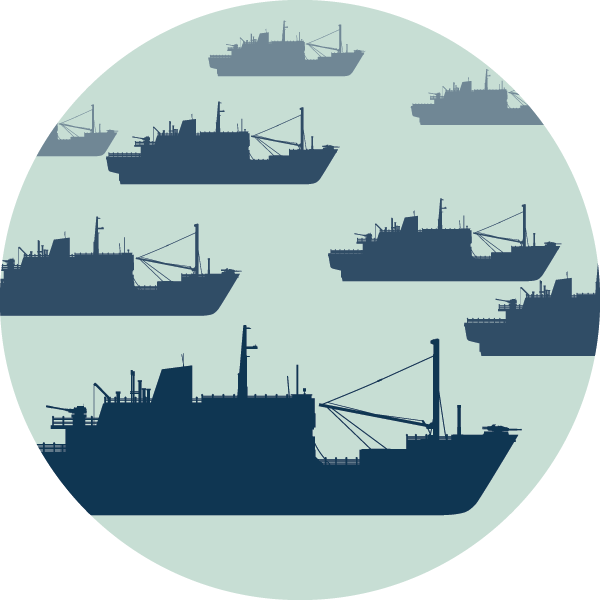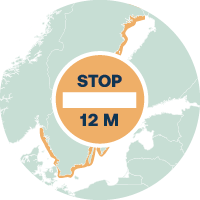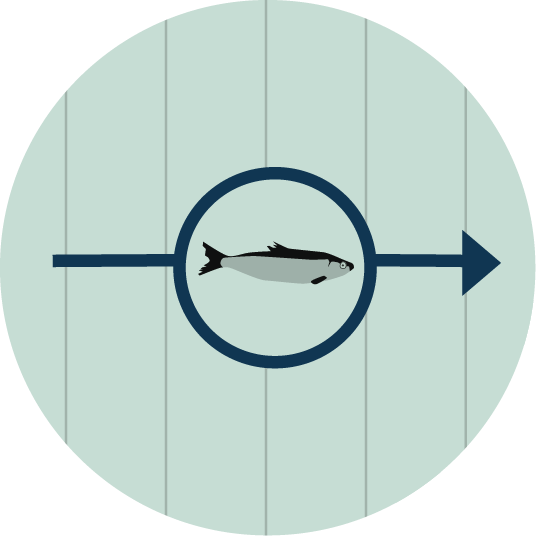Governments need to take immediate action
The Baltic Sea’s fish stocks are in decline. The cod is nearly gone, and the herring are rapidly decreasing in number and size and are reaching sexual maturity earlier. Although the Swedish government can push measures through quickly and forcefully on some issues, it has taken a wait-and-see approach on the Baltic Sea situation and merely appointed new commissions of inquiry. One of these commissions has submitted its report, and the science has never been more evident – there is no time to lose. The government must act now.
Due to the disturbing trend for herring and Baltic herring, the government asked the Swedish Agency for Marine and Water Management (SwAM) to investigate ways to protect the species, although only within the coastal area between Kalmar and Gävle. Nearly 18 months later, alarming reports about the Baltic’s marine environment and non-existent catches for coastal fishermen continue to pour in. The Parliament has reacted by issuing several fishery policy announcements to the government, including an announcement in November 2021 supported by all parties listing a series of key points to protect the Baltic’s fish stocks.
Despite these announcements and alarming reports, the government has chosen to bide its time. When questioned about the urgent situation for Baltic Sea species, Minister of Rural Affairs Anna-Caren Sätherberg has said that she wants to wait for SwAM’s official report, which was recently delivered. The question now is how the government will respond – there are now no excuses for failing to take action. The commission’s recommended measures include reducing fishing pressure and moving the trawling border further out from the Swedish coast.
Essential to take action now
Researchers from the Department of Aquatic Resources produced supporting documentation for SwAM within the scope of the commission’s mandate. In presenting their results, the researchers emphasised that we cannot ‘wait to take action until knowledge bases are complete’ – measures must be initiated immediately and then evaluated and adjusted as needed.
The research shows that:

Fishery is the primary factor impacting the decreased number of large Baltic herring
The herring stock has not decreased due to reproductive problems. Researchers have studied environmental factors and found that spawning and nursery areas are plentiful, and that climate changes and eutrophication are unlikely to have affected the herring’s ability to reproduce.

Fishing pressure must be reduced
Large Baltic herring are important for the ecosystem and crucial for coastal fishery. A lack of larger herring can cause food shortages for seals, sea birds and predatory fish and can encourage an increase in the stickleback population. Sticklebacks are nowadays comparable to swarms of locusts, eating the eggs and larvae of species such as perch and pike. Research confirms that the share of large Baltic herring will be further reduced if fishing pressure continues at current levels. Fishing pressure needs to be cut by half to reverse the trend in the Gulf of Bothnia and along the coast from Stockholm northwards. This will level off the downward trend for large Baltic herring and allow the stock to begin slowly recovering around year 2026.

Positive effect achieved by moving trawling border further out
Fishery activity near the coast has increased in recent years, mainly during late winter/early spring when fish are spawning or gathering to spawn. The Department of Aquatic Resources has found that moving the trawling border 12 nautical miles further out from Sweden’s baseline can protect the Baltic herring during overwintering and pre-spawning activity.

Fish migrate
The government has chosen to focus the commission’s inquiry on the area between Kalmar and Gävle. But the Department of Aquatic Resources stresses that the fish are migratory, so it is not enough to protect herring and Baltic herring along the coast in this one area. Protection needs to cover larger areas, such as the Baltic’s entire central, northern and southern areas.

Genetic differences
There are important genetic differences between the Baltic Sea’s herring and Baltic herring populations, and different groups have adapted to different salinity levels, water temperatures and light conditions. They also spawn at different times of the year.
The species’ unique genetic differences may be critical for their survival as the Baltic Sea environment changes over time, and yet marine management does not take these populations into account.
The genetically diverse populations have been known about for years and have now been confirmed by several researchers. With the heavy fishing pressure, there is a risk that key populations will be fished out.
Various measures are needed
Among the range of necessary measures, reduced fishing pressure and an expanded trawling border go hand-in-hand. Moving the trawling border 12 nautical miles from Sweden’s coastline can protect overwintering and spawn-migrating Baltic herring locally. But unless this is combined with reduced fishing pressure, fishery activity will increase in other areas.
Even though the Department of Aquatic Resources recommends moving the trawling border for all vessels, regardless of size, SwAM is recommending a limited duration scientific project with a shutdown for all boats over 24 metres.
SwAM is failing to follow the researchers’ advice because it believes that the socioeconomic consequences are disproportionate ’given the uncertainties surrounding the effects of the measure.’ But very few would be affected by shutdown of coastal trawling: a total of 17 vessels, 10 of which are over 24 metres. The question is whether it is worth undermining essential protection for herring and Baltic herring so that seven boats can continue trawling.
SwAM hopes that moving the trawling border for boats over 24 metres will cause a resurgence in large Baltic herring and improve protection for the fish populations. At BalticWaters2030, we consider it impossible to protect genetically unique stocks as long as industrial trawling is permitted in the Baltic Sea.
BalticWaters2030 believes that fishery should be based on small, locally anchored boats that leave from and return to the same port. This is the way to protect the environment, create local jobs and boost the economy in sparsely populated areas.
Talk or action?
The government needs to act. In January this year, Minister of Rural Affairs Anna-Caren Sätherberg stated that it is important for the government to ensure favourable future conditions for a coastal fishery and a competitive fishing industry. This statement is now being put to the test. The science cannot be more evident – Sweden must initiate measures immediately to protect Baltic herring as well as coastal fishery. We have very little time to save the Baltic fish stocks. It is time to act.

